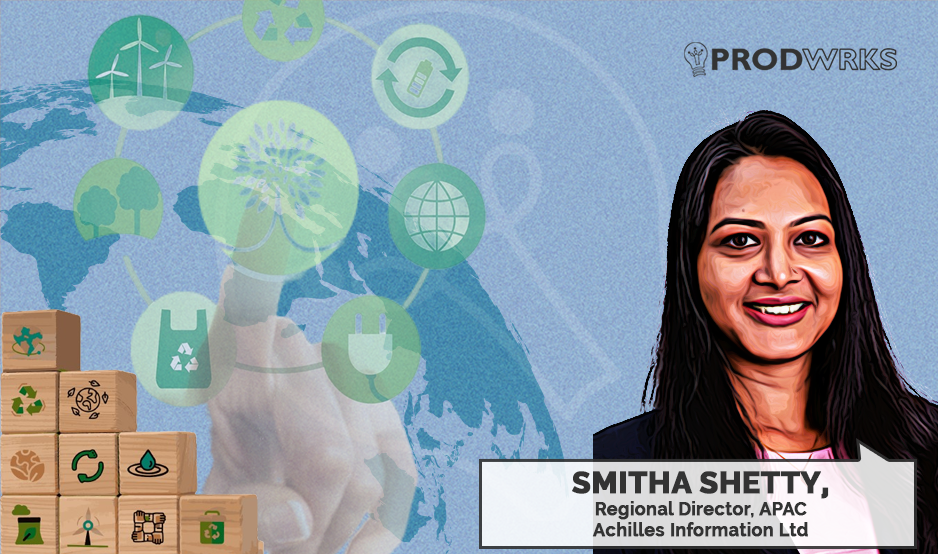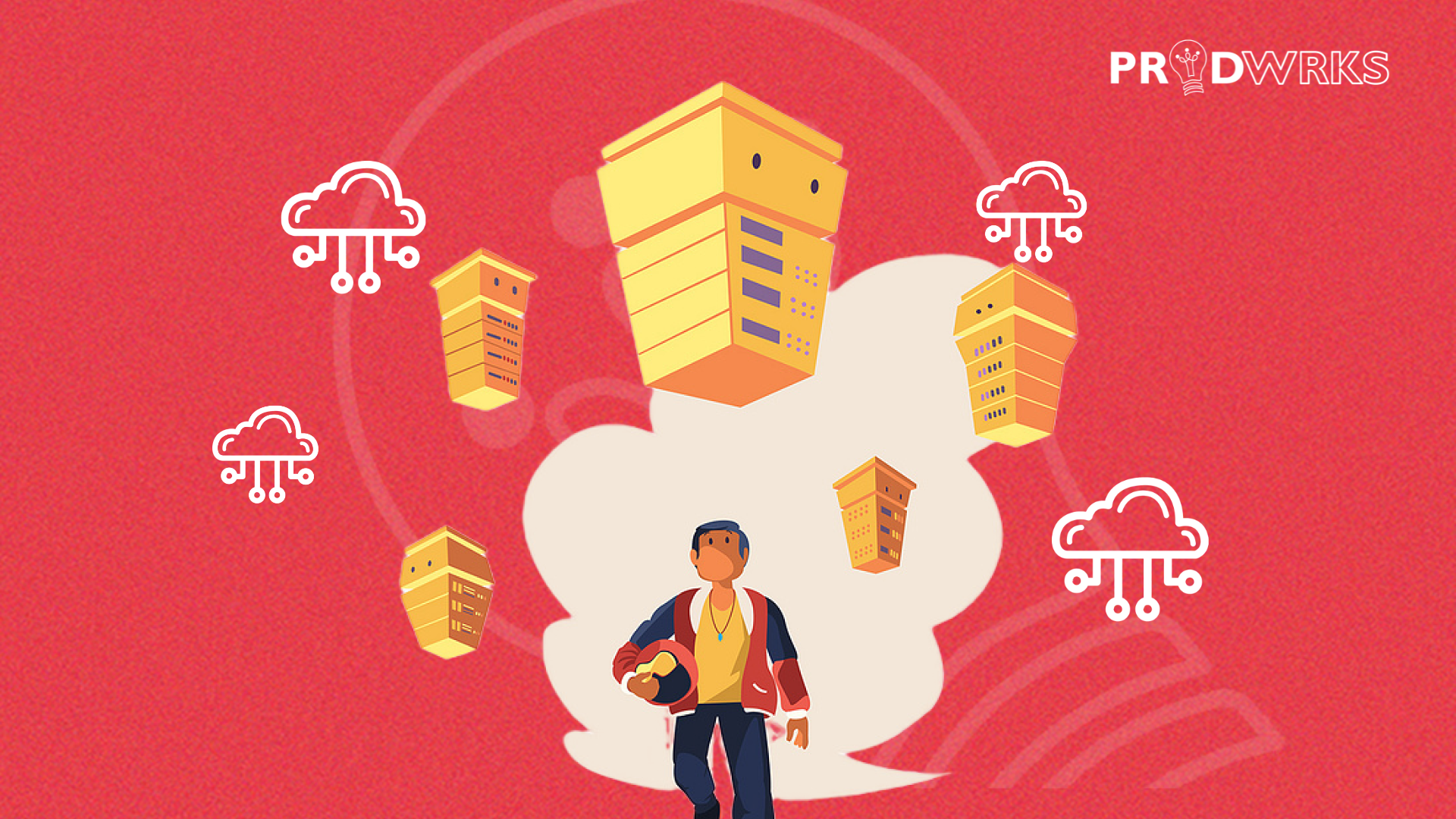
While the world is debating whether artificial intelligence will take away everyone’s jobs, Pune-based E42.ai is busy building enterprise-ready multi-functional AI coworkers. These AI cognitive agents are designed to work alongside human colleagues and enhance productivity in marketing, sales, customer success, human resources, IT operations, and finance.
E42.ai was founded by Animesh Samuel (CEO) and Sanjeev Menon (head of tech and products) in 2012, when the term AI, as Sanjeev jovially explains, represented Air India and not artificial intelligence and NLP meant neurolinguistic programming and not natural language processing.
Cut to 2023, E42.ai stands out for its pioneering work in building foundational AI models in India with human-level cognitive capabilities, while other companies look to the West to purchase open-sourced AI algorithms.
In a conversation with team ProdWrks, Sanjeev elucidated his perspective on what it takes to build a deep-tech AI startup in India and his vision for creating a marketplace for hiring pre-trained AI coworkers.


Inspiration from IBM Watson
Sanjeev says that they envisioned E42.ai as an open-ended R&D company from the get-go. Their problem statement was to reduce the gap between machines and humans by adding human-level cognition to systems and unlocking machine evolution.
"If you look at human evolution, until we had language and mathematics skills, we were prey to most larger animals. But we went to the top of the food chain the moment we started rallying people around stories and transmitting our knowledge to the next generation using language. At E42, we want to unlock machine evolution by giving AI systems human-like cognitive and natural language capabilities."
However, in 2012, when Sanjeev and Animesh started E42, teaching machines to learn human language and cognitive capabilities had two major roadblocks – The first was the requirement of raw data to train such a model, and the second was computing power.
To solve the data challenge, the E42 team drew inspiration from IBM Watson’s appearance in Jeopardy! (TV show). The E42 team created an experimental model called Pooch – an SMS-based answering engine, kind of like a rudimentary version of ChatGPT.
"Pooch allowed users to pose any question via SMS and get answers. But unlike ChatGPT, the answers were extractive and not generative. This was a clever, cost-effective solution to get user-generated data that we used to train our AI systems," says Sanjeev.
The Pooch experiment, launched in 2013, went viral and attracted considerable attention, amassing 300,000 users. The E42 team handled around 100,000 queries daily, and the platform generated 30 million Q&A pairs, providing valuable data for developing E42.ai’s algorithms.
While Sanjeev had now had enough training data, he still needed raw computing power to process all the data generated and train their AI model. So, they took help from Microsoft and other cloud service providers, who gave the E42 team the resources for half a million dollars worth of computing power for research and development.
Betting on the Future
With both data challenge and processing power sorted, Sanjeev and his team developed and trained their AI models with cognitive abilities. Looking back at this crucial phase, Sanjeev says that when building an R&D-focused company in deep tech, you will not see immediate results or use cases for your research models.
He says, "The Pooch experiment did not give us a revenue stream, and it was just an open-ended process to get some a basic level of cognitive abilities onto the system. We did not know what use cases would arise from it, and we certainly did not have an enterprise focus then. But, we knew that once we had cognitive abilities, many things would open up."
Sanjeev urges founders researching and building deep tech to be patient and look for areas where technology convergence may create a user need in the future. He asks founders to look at history for inspiration, where the need for new products and solutions arose due to technology convergence.
He cited the example of the advent of Voice over Internet Protocol (VoIP) and how the integration of different media streams (audio, video, and text) revolutionized communication and gave rise to the need for various communication platforms.
"The convergence of technology is bound to happen anytime, but it's not something you can predict. You have to look out for what's happening in your technology space, what is happening with your potential customers, and what's happening in the enterprise landscape and the open internet to get a sense of how things evolve from a convergence point of view," says Sanjeev.
Moreover, in 2012, powerful hardware resources such as advanced GPUs for computing and training AI models were also prohibitively expensive. There was a risk that it would make the solutions they were building for the future expensive, too. But Sanjeev had a contrarian view.
"We took a bet that computational power and GPU would become cheaper over time and be easily accessible. We took a leap of faith that AI will be inevitable and the next frontier for human intelligence. So, we bet on technology, and the use cases for the technology appeared and evolved over a period of time."
The Pressure to Productize
Sanjeev narrated several instances where they were pressured to productize their cognitive AI models, but they chose not to and doubled down on R&D to make their algorithms better.
One such pivotal moment was during the embryonic stages of the Pooch experiment when enterprises were ready to pay and also contribute human resources to turn the Pooch answering engine into an expert online community to answer queries from their own users and customers.
"It was very tempting to accept contributions and money, but for such a model to scale up, we would have needed substantial investment to increase traffic and generate advertising revenue. This would have put us in direct competition with giants like Google, whose primary revenue stream is advertising. So it didn't make sense for us at that time."
In 2018, when the market signalled a shift towards verticalized B2B solutions, E42 was again pressured to use its algorithms to offer verticalized chatbots, which were in vogue. Investors and industry experts advocated specializing in domain-specific chatbots, predicting immense demand for conversational interfaces in the future.
We have to admit, using E42’s cognitive AI models to build verticalized chatbots would have created a wealth of similar data, making their systems more intelligent within a domain like marketing or sales or finance.
But Sanjeev had other ideas that defied common wisdom and decided to flip the switch on this thought process. He argued that artificial intelligence, like human intelligence, needs to be better in language and cognitive understanding first in order to learn any domain better.
"If you take human intelligence, you must understand language well to be an expert in a specific domain. The same holds true with artificial intelligence. So we wanted to improve our systems' language and cognitive abilities before building a verticalized solution in marketing, HR, sales, or any specific domains."
Results of Resistance
Sanjeev’s decision to resist the productization of their algorithms in 2018 and not build verticalized chatbots became even more profound with the emergence of generative AI in 2022. Open-sourced algorithms from companies like OpenAI have made it easy for anyone to create a chatbot and would have made any similar solution that E42 had built redundant.
"The verticalized chatbot concept has lost its defensibility. With OpenAI's open-sourced models, anyone fresh out of college could easily create a chatbot using APIs, outperforming specialized conversational AI providers. So this validated our decision to focus on building language and cognitive abilities for our AI models instead of domain abilities during the initial years."
"When we started, there were only a handful of cognitive service providers. IBM Watson was one, and very few cloud providers offered cognitive services. There have been quite a few mornings where we wondered if we were on the right track. But nobody can predict the future with certainty. Even if you have the best practices for building a great product, the best marketing, and the best teams, there is no guarantee for success."
"Our minimal viable way was to build really good algorithms that understand language, images, text, and video."
Sanjeev and his team initially adopted an IT services model, building customized solutions for businesses needing cognitive abilities. By doing so, they perfected their algorithms over time.
Finding Validation
With a solid foundation in cognitive AI models developed over time and with a clear focus on what they did not want to do, E42.ai finally began the challenging yet crucial phase of productization in the latter half of 2018, six years after they started their R&D journey.
The transition to a market-ready product arose from a challenge from Tata Communications, which recognized the potential of E42 cognitive AI systems and tasked them to create an AI marketing assistant for their internal use cases.
"The Tata Communications team spotted us at an awards ceremony where our AI models won. Tata was close to signing a deal with the IBM Watson team to build an AI marketing assistant that could analyze data and make the life of a marketing analyst easier. Having seen our capabilities in the awards ceremony, they gave us a chance to build a solution for them."
The rest, as they say, is history. Within two days, the E42 team, which had only 15 members at this point, was able to build a POC and nabbed Tata Communications as their first customer. What’s more impressive is that they beat the IBM Watson team, who practically had unlimited resources at their disposal, to clinch the deal.
Finding Success
Cut to 2023, E42.ai has a team of 90+ people and 60+ clients, including major names like Accenture, Mahindra, Tata Communication, Piramal Group, and Aditya Birla. Their anticipated license-only revenues for the year is $3 million.
Sanjeev is confident of the robust technology layer and foundational algorithms they have built, which he believes is on par with the big tech, and it is one of the reasons enterprises love E42’s products today.
“We gained a lot from our slightly wandering roadmap in the initial phases. But after years of research and perfecting our AI models, our product is not a mashup of technologies like other AI companies. We've added a lot of proprietary, foundational blocks into our stack through years of R&D. Enterprises love our products because we are closed domain and offer a secure platform."
"Our platform today has a conversational AI piece powered by a large-language GenAI model. We also have audio and video transcoding and no code API integrations to various enterprise systems. So, any enterprise of our partners can create AI graphs connecting these cognitive abilities with the various enterprise systems and automate different roles or processes within an organization."
For instance, Mahindra and Mahindra use an E42’s AI coworker created on the platform called Mahindra Genie to assist their HR teams. Genie is a single point of contact for all Mahindra employees to get answers to queries on their policies, procedures, and leave transactions. It also has a performance improvement mechanism built on top. Even queries related to IT systems or IT incidents are handled by this single AI coworker from E42.
E42's Next Big Bets
As E42.ai continues its march forward, Sanjeev discusses the operational expansion into the US and Europe. He unveils two significant upcoming features: a marketplace for hiring AI workers and exploring social value alignment among AI workers.
"The idea is that you can visit the marketplace, have a conversation with the AI coworker like how you would do with a regular human candidate looking for a job, ask the AI questions to assess its capabilities, and onboard it if you are satisfied."
Sanjeev says there is a long way to go to realize this model and invites ecosystem partners to identify unique problem statements to train these coworkers, place them for hire in their platform, and get a licencing fee in return.
He also believes that AI coworkers will evolve to include social value alignment, and the E42 team is already involved in deep research on the subject.
"We envision a system various AI coworkers in an organization operating in multiple domains would be able to interact with each other, be aware of their individual goals, and coordinate together for better outcomes for their enterprise."



